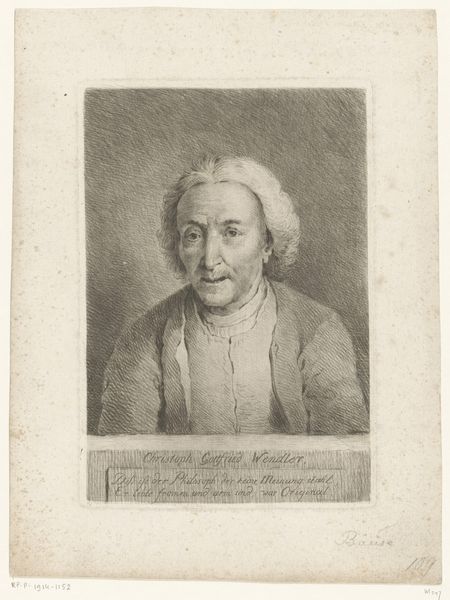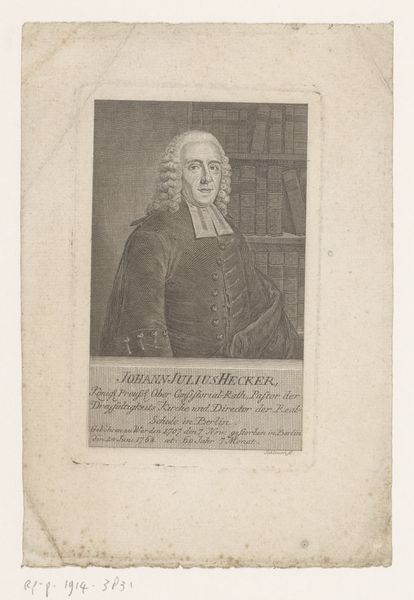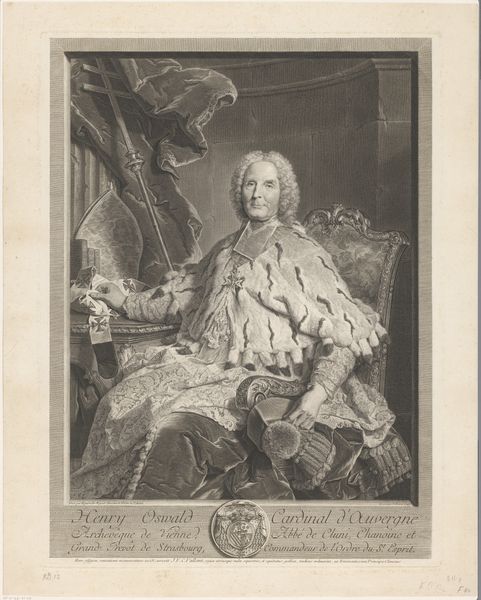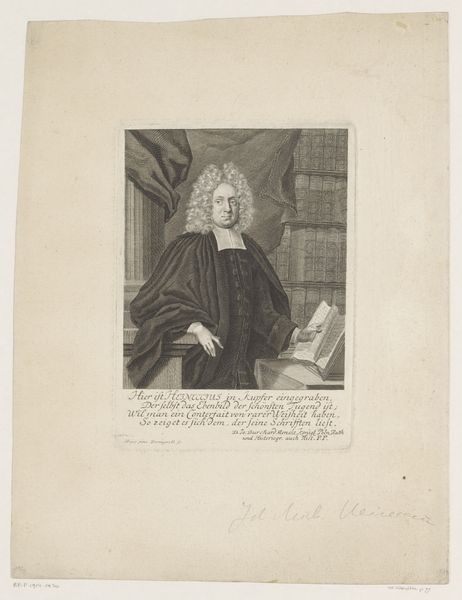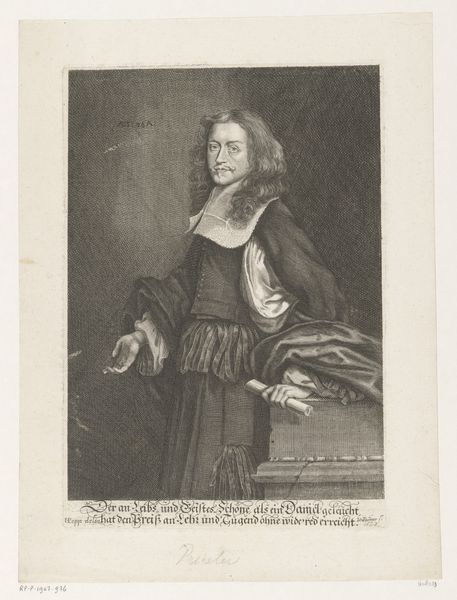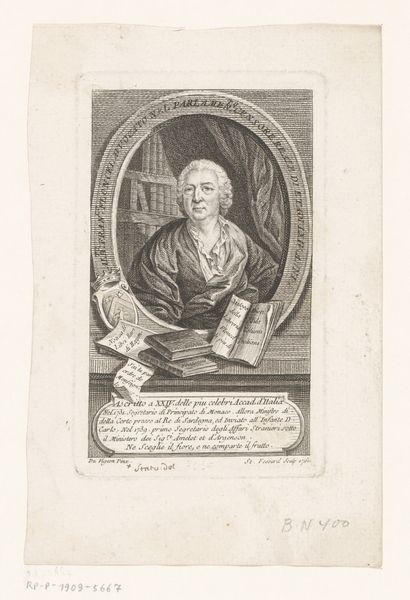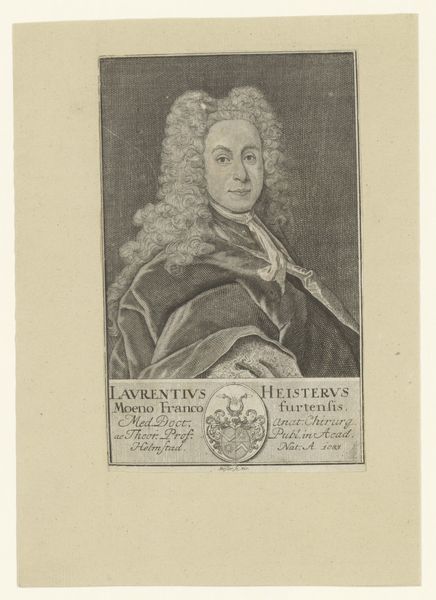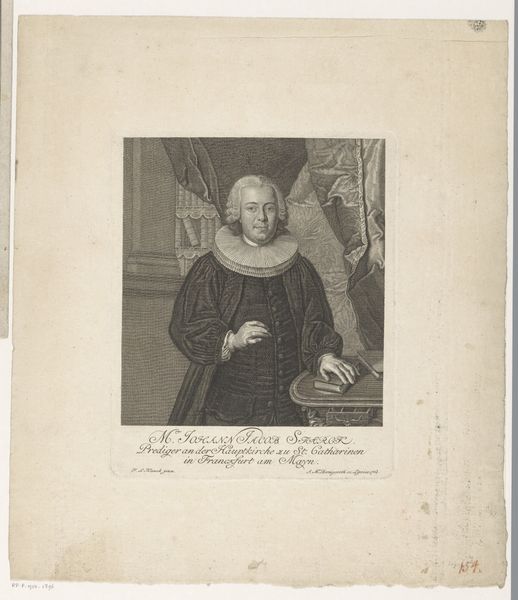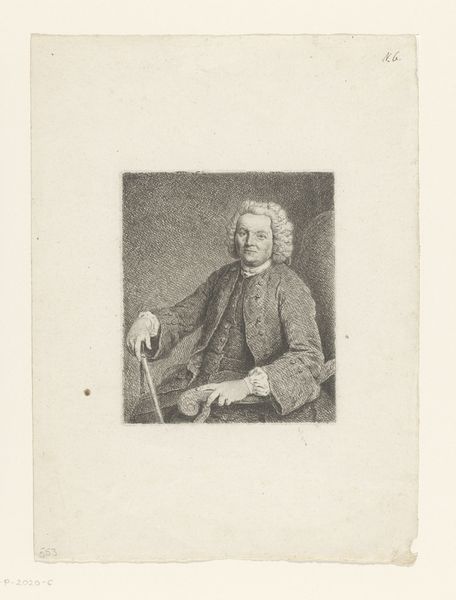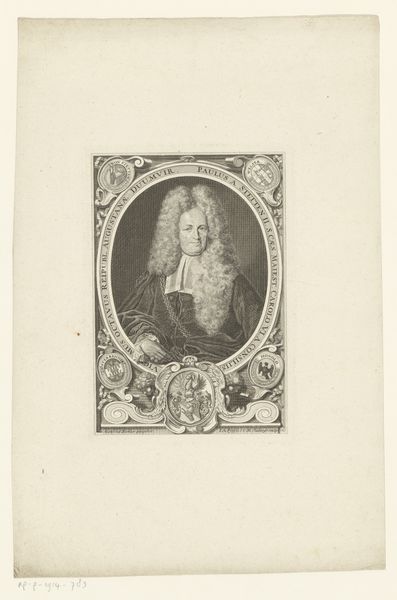
engraving
#
portrait
#
baroque
#
academic-art
#
engraving
Dimensions: height 184 mm, width 135 mm
Copyright: Rijks Museum: Open Domain
Curator: Here we have a piece titled "Portret van Balthazar Gibert," an engraving dating back to 1752 by A.J. Defehrt. What strikes you first about it? Editor: The overwhelming sense of... stiffness. The man’s pose, his expression, even the fur around his shoulders feels rigidly formal. Almost oppressive. Curator: That formality speaks to the artwork’s place within the tradition of Baroque portraiture, especially academic art. The artist clearly intended to convey status and authority. Editor: Exactly. Look at the backdrop, though. The books behind him, it signals knowledge and power, but who gets to hold that knowledge, that power? It's an era defined by exclusivity. Curator: This portrait likely served a very public function, solidifying Gibert’s position as a respected professor within his intellectual circles and perpetuating the image of a learned elite. Engravings also democratized image reproduction. Editor: Yes, democratized... but within tightly controlled channels, wouldn't you say? Distributing sanctioned images to further entrench an existing hierarchy. I'd bet that very few members of the lower class would have the means of owning it, even so. Curator: Certainly. The composition further reinforces that sense of authority, doesn't it? The viewer is positioned slightly below Gibert, looking up at him. The detail in his garments compared to the starkness of the background…it all contributes. Editor: And it is interesting to consider how such portraits reinforced societal structures by meticulously controlling how individuals were presented and perceived, not always as an authentic person. These engravings were incredibly influential in solidifying very exclusive standards for both masculinity and authority in the public consciousness. Curator: Portraits like this really show how intertwined art and social hierarchies are. Thank you for highlighting these very valid concerns. Editor: Always good to reflect and ask "who are we excluding?". Thanks!
Comments
No comments
Be the first to comment and join the conversation on the ultimate creative platform.


